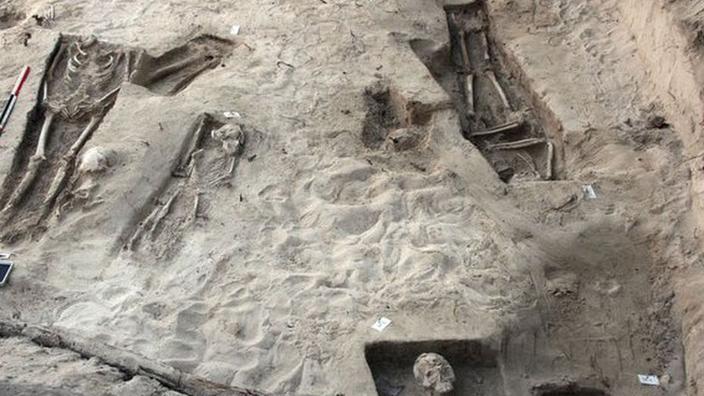Slave cemeteries, vestiges of huts, bondage necklaces ... A traveling exhibition will present the history of colonial slavery told by archeology, which allows to give substance to the reality of this dark period, Inrap announced Monday.
Sugar and Blood
, intended for young audiences from college onwards, will be distributed by the Education League through its various networks in France, in the form of an "
archeocapsule
", a kit of educational, modular and light exhibitions. , produced by the National Institute for Preventive Archaeological Research.
Read also: At the castle of Blois, archaeological excavations trace the history of the site until the Neolithic era
Objective: to show how the recent contributions of archeology have renewed the history of the slavery of sub-Saharan Africans, through the study of sites and material remains linked to their daily lives in the West Indies, Guyana, Reunion Island or in metropolitan France.
"
For a long time, the history of slavery was known through the archives of masters, merchants who went to look for slaves in Africa and brought them back to the colonies, administrative documents, engravings
", underlined Jean-Marc Ayrault, president of the Foundation for the Memory of Slavery, at an online press conference.
Read also: Slavery, decolonization: 181 historians denounce an "erroneous" history textbook to become British
These elements "
did not give a voice to the slaves, who nevertheless left traces: archeology gave them back not only a life, but a dignity
", argued the former prime minister, welcoming that this story is echoed. among young people, almost 20 years after the law known as the Taubira law (2001) recognized slavery and trafficking as crimes against humanity.
Over the past 20 years, field excavations have uncovered slave cemeteries, vestiges of streets grouping slaves' huts, material produced by slaves such as pottery or clay pipes, "
necklaces of servitude
”that they were made to wear ..., detailed Sylvie Jérémie, researcher at Inrap.
Genetic studies have also provided information on the health status of these “
servile populations
”, particularly stricken by pathologies such as bone tuberculosis.
So
many
archaeological “
objects
” that will allow visitors to the
Sugar and Blood
exhibition
to “
touch the reality of slavery
”, commented Inrap President Dominique Garcia.
These vestiges “
are still scattered in the French ultra-marine domain, because France is just approaching this part of its history
”, noted Sylvie Jérémie.











/cloudfront-eu-central-1.images.arcpublishing.com/prisa/KMEYMJKESBAZBE4MRBAM4TGHIQ.jpg)



